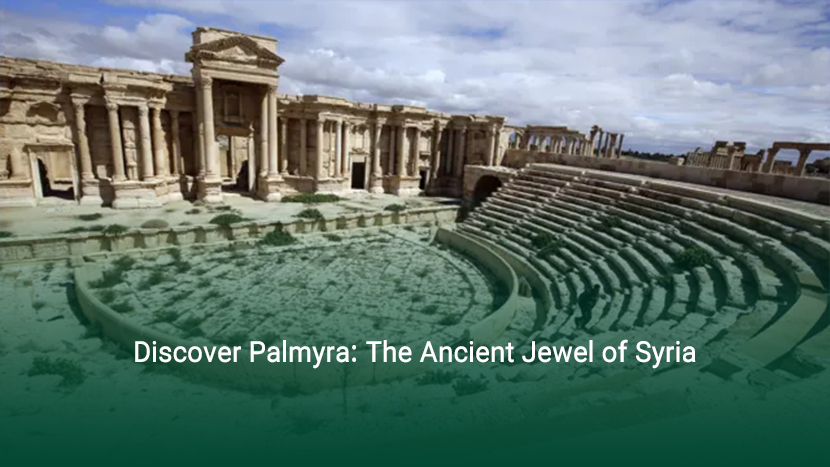
Discover Palmyra: The Ancient Jewel of Syria
Palmyra, once a flourishing city of ancient civilization, stands as a testament to Syria's rich historical heritage. Known as the "Bride of the Desert," this UNESCO World Heritage site is located in the heart of the Syrian desert, near the modern-day town of Tadmur. With its extraordinary mix of Greco-Roman and Persian influences, Palmyra was one of the most important cultural and trade centers in the ancient world. Today, despite facing significant destruction due to recent conflicts, Palmyra continues to captivate the imagination of historians, archaeologists, and travelers alike.
Palmyra’s importance dates back over 2,000 years, when it became a prominent caravan city linking the Roman Empire to Persia, India, and China. As a key stop on the Silk Road, Palmyra flourished both as a trading hub and a melting pot of cultures. Its strategic location allowed it to become a powerful city-state that enjoyed great prosperity. The city’s rulers held an independent yet often amicable relationship with Rome, and Palmyra itself became famous for its unique blend of Greco-Roman and Persian architectural styles.
One of the most famous rulers of Palmyra was Queen Zenobia, who led a short-lived rebellion against the Roman Empire in the 3rd century CE. Her reign marked the pinnacle of the city’s power and influence. Under her leadership, Palmyra briefly became an independent empire before being defeated by the Romans. Today, the ruins of Palmyra still echo the grandeur of this once-great city.
Palmyra is known for its stunning ruins, which are spread out across the desert. Some of the most remarkable sites within the city include:
Palmyra remains a significant archaeological and historical site, despite the challenges it has faced in recent years. Visiting Palmyra offers a chance to explore one of the most important ancient cities of the Roman and Persian worlds. For history enthusiasts, archaeologists, and anyone interested in ancient civilizations, Palmyra is an essential destination.
The city’s ruins provide a vivid image of the cultural fusion that once existed in the region. Visitors can marvel at the ruins of grand temples, theaters, and streets that once bustled with activity. Even though parts of the site have been damaged, Palmyra’s historical importance is undeniable, and it remains an integral part of Syria’s national identity.
Despite the destruction caused by recent conflicts, the Syrian government and international organizations continue to work on restoring and preserving Palmyra. The site is a reminder of the deep cultural roots that Syria holds, and the importance of safeguarding its ancient history for future generations.
Traveling to historical cities is a rewarding experience that offers the chance to uncover the secrets of the past. Palmyra, along with other ancient sites, is full of historical wonders that will surely captivate any traveler. Be sure to add this remarkable archaeological site to your list of virtual tourism destinations (live broadcasts and direct streaming), allowing you to explore it from the comfort of your home. If you’ve had the opportunity to visit this historical monument in person, please share your experiences and memories with us and fellow readers. Your insights will help others plan a dream-like and unforgettable journey.
By using form u agree with the message sorage, you can contact us directly now